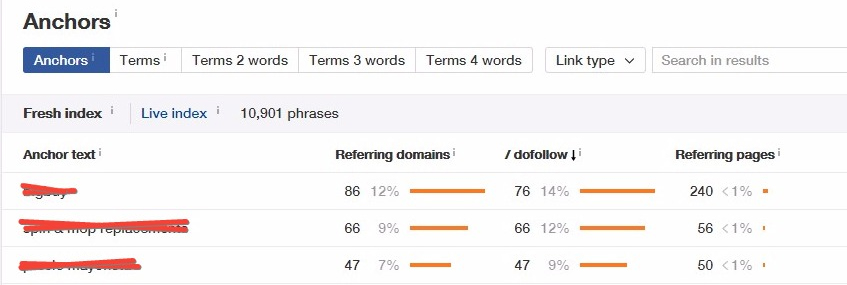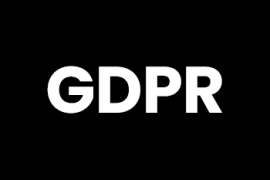Share This Article
Do you know what an anchor text is? This tiny piece of code can help you get to the first places on Google. Keep reading if you want to know more.
Within everything that surrounds and influences SEO positioning, there is a series of actions and strategies that, through correct usage, can really help the search engine to link up a sequence of words with your web page and online shop, and, as such, boost the desired positioning.
One of these actions is to develop the right anchor text strategy.
In other articles on this blog like the one where we talk about internal linkbuilding we have already commented on its importance, but now we are going to go into much more depth with regard to its characteristics and significance.
What are anchor texts?
Anchor texts are visible texts that are used in links. That is to say the word or words, normally underlined, that contain a link and allow you to click on it. Here is an example: If I say that BigBuy is a dropshipping provider these two linked words (dropshipping provider) are the anchor text for my link. The anchor texts are relevant both when they link away from your website and when they link to it. In HTML, they would look like this:
On BigBuy we sell <a href=”https://www.bigbuy.eu/es/tienda-dropshipping.html”>dropshipping shops</a>
In this example, “dropshipping shops” would be the visible text in the link. Upon seeing this structure, Google will detect that the link leads to a page that talks about dropshipping. If many links with the anchor text “dropshipping shop” point to my site, Google will understand that my site is relevant to this subject and improve my positioning.
However, let’s put the following in the link:
You can find information about dropshipping <a href=”https://www.bigbuy.eu/es/tienda-dropshipping.html”>here</a>
If the anchor text is the work “here”, Google does not receive any information about where the direct his link. As far as positioning is concerned, this link has no value. But we will go into more depth on this subject later.
In summary, the anchor text is an essential element in gaining visitors to your website and to improve internal navigation, but the really important factor is the fact that it informs Google of the actual content of your link. In this way, not every link has equal value.
A key word for each anchor text
Not all anchor texts that lead to our web page or online shop has to be the same or lead to the same URL, such as ‘home’ for example. The ideal is that each one of the internal pages of your website has a key word assigned to it, which will be the one used in the anchor text for the onsite (internal) and offsite (external) SEO.
Types of anchor text
Not all links are the same, therefore we can distinguish between different types as per the following:
- LSI anchor text: This is what we have seen previously, and is the most recommended type. The initials stand for Latent Semantic Indexing and, basically, consists of linking a key word with a destination website. If, for example, your online shop sells ladies’ shoes, the ideal anchor text will be related to those words – “ladies’ shoes”, “ladies’ footwear sale”, etc.
- Branded anchor text: These are linked using the exact name of the online business. E.g. BigBuy.
- Generic anchor text: These are the least recommended types if we want to develop our SEO offsite strategy. As we have already seen, linking the words and text using “click here” or “more information” etc. does not send any information to Google.
- URL anchor text: These are links using the URL of the webpage. For example, https://www.bigbuy.eu/. We do not recommend these types for aesthetic reasons (they look very bad within a text) as well as for reasons to do with your SEO positioning. These links don’t inform Google of anything either.
- Image anchor text: Often a link is represented by a photo or image. In this case you can add a key word of your choice in the address or alternative text. These can also help a lot with your SEO positioning.
Common errors in anchor text strategy
But it is not all that easy or pretty as it seems. There are bad practices that only achieve the opposite of what we are aiming for – demoting our web page.
This happens when Google detects, for example, a lot of anchor texts that are the same, that is to say, with the same key word, which can be considered as spam.
Tools to control the anchor texts
It is possible to know how many external links to our web page or online shop there are across the whole internet. There are different tools to verify and control what and how many types of anchor texts are being used and, consequently, what Google knows about our website.
From here, we recommend Ahrefs (as you can see, this is a branded anchor text). Within its many options, you will see a specific one for anchor text, where you will find the following information, as an example:

This allows you to view the anchor text that your website uses and to test whether it is correct or not. If it is now, you can always contact the websites that have it wrong. They won’t all fix it for you, but you may be able to change some.
The influence of anchor text on SEO
Once we know all the ins and outs of anchor texts, we can take the opportunity to remind ourselves of its importance. We can summarise them in the following points:
They help Google to understand our website: by linking a specific anchor text to a specific section of our webpage, the search engine understands that this word is related to our page, which automatically gives it a higher value in its organic positioning.
They increase the number of views and the time spent on the site: internally linking to our webpage, blog or online shop means that the users visit more content by pressing on the different links. Both the number of pages visited as well as the time spent on the website will improve and will also positively influence how our website is viewed by Google.
As you have been able to see, anchor text is more complex that it seems at first glance. Use it correctly and you will improve your organic or SEO positioning by the day.





 Contact
Contact





